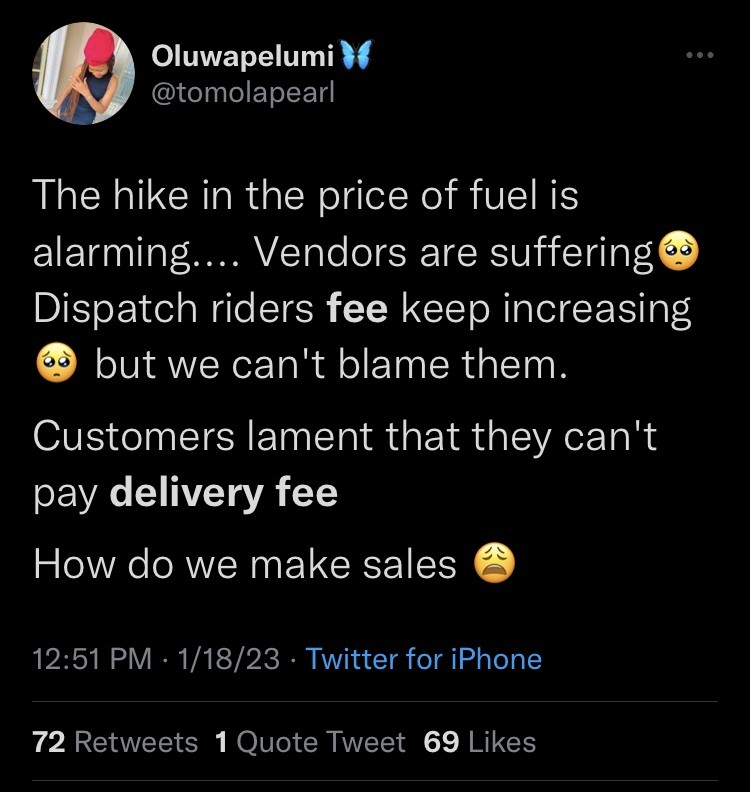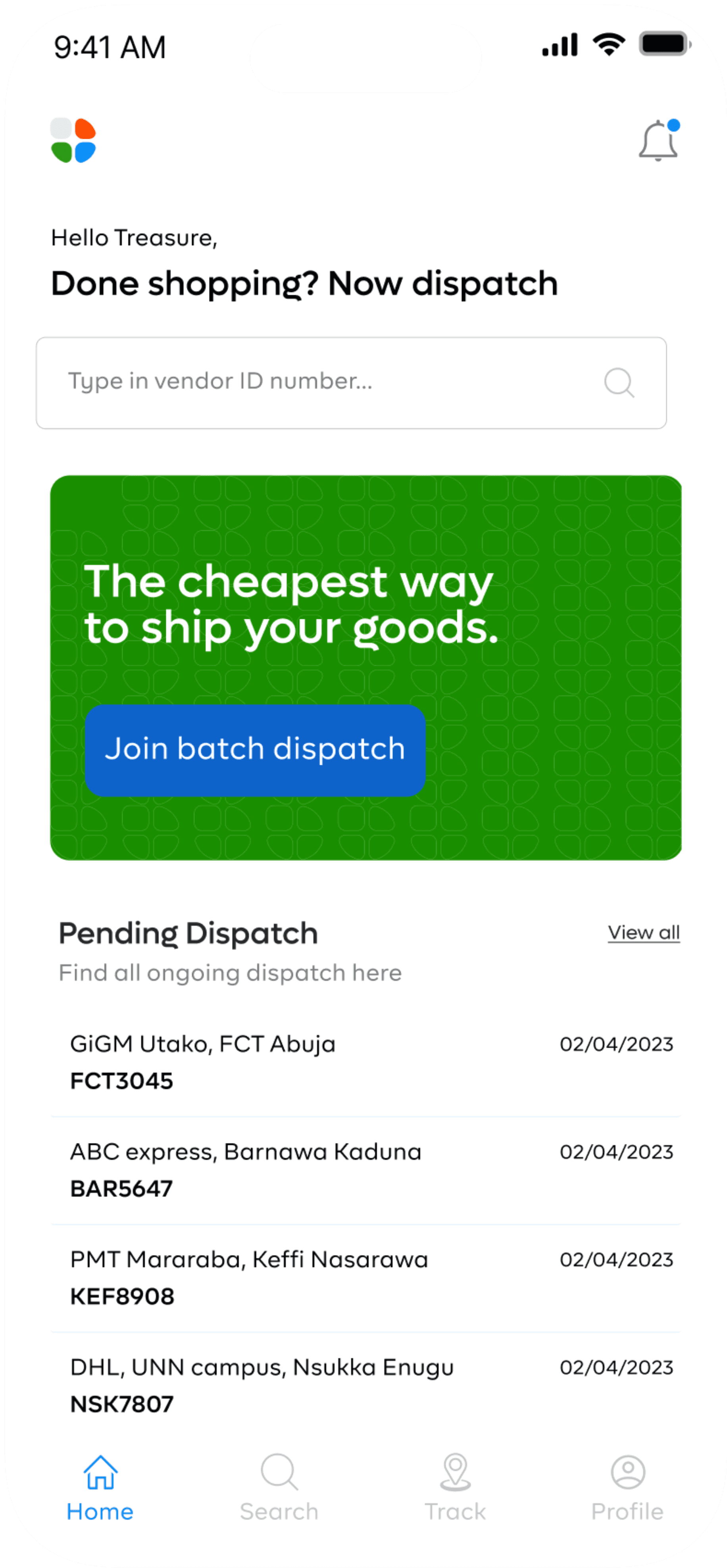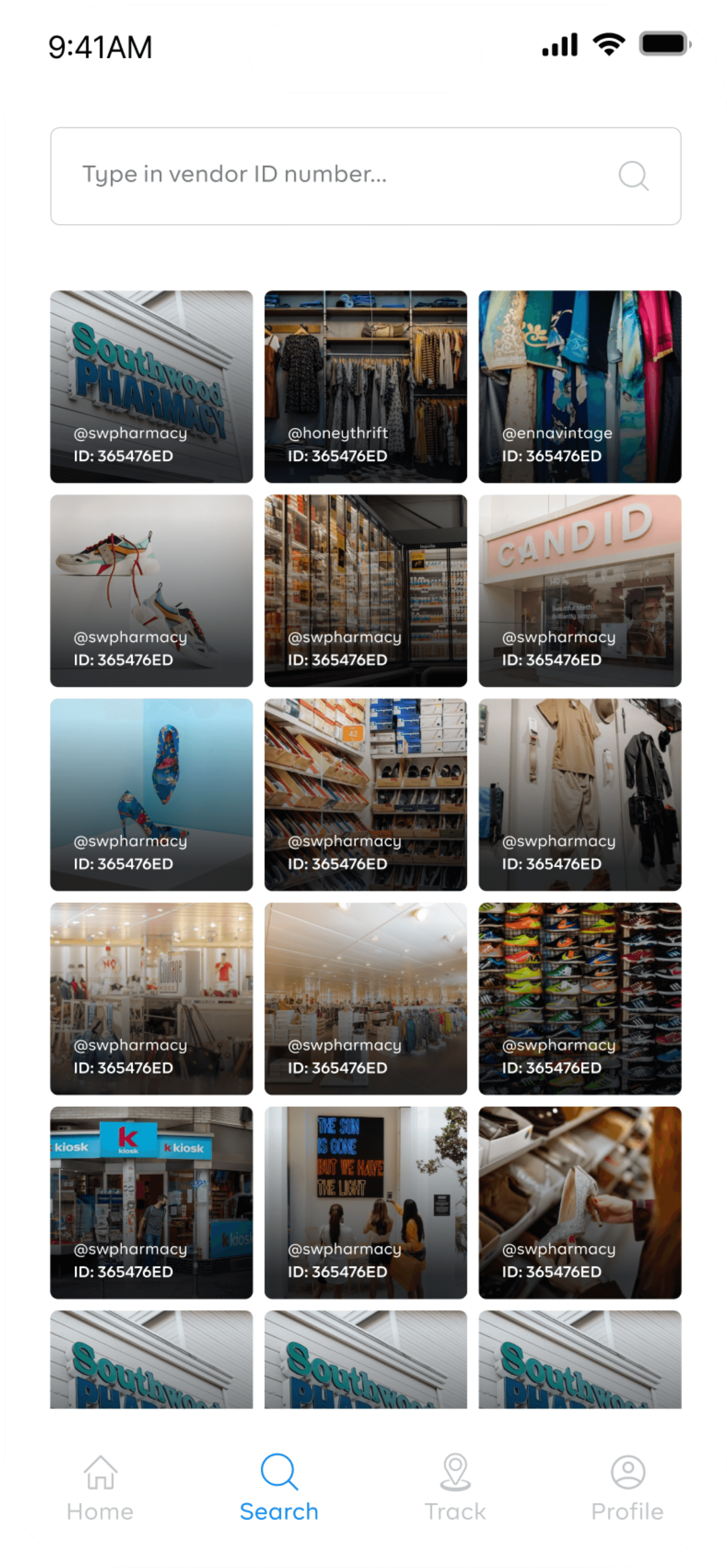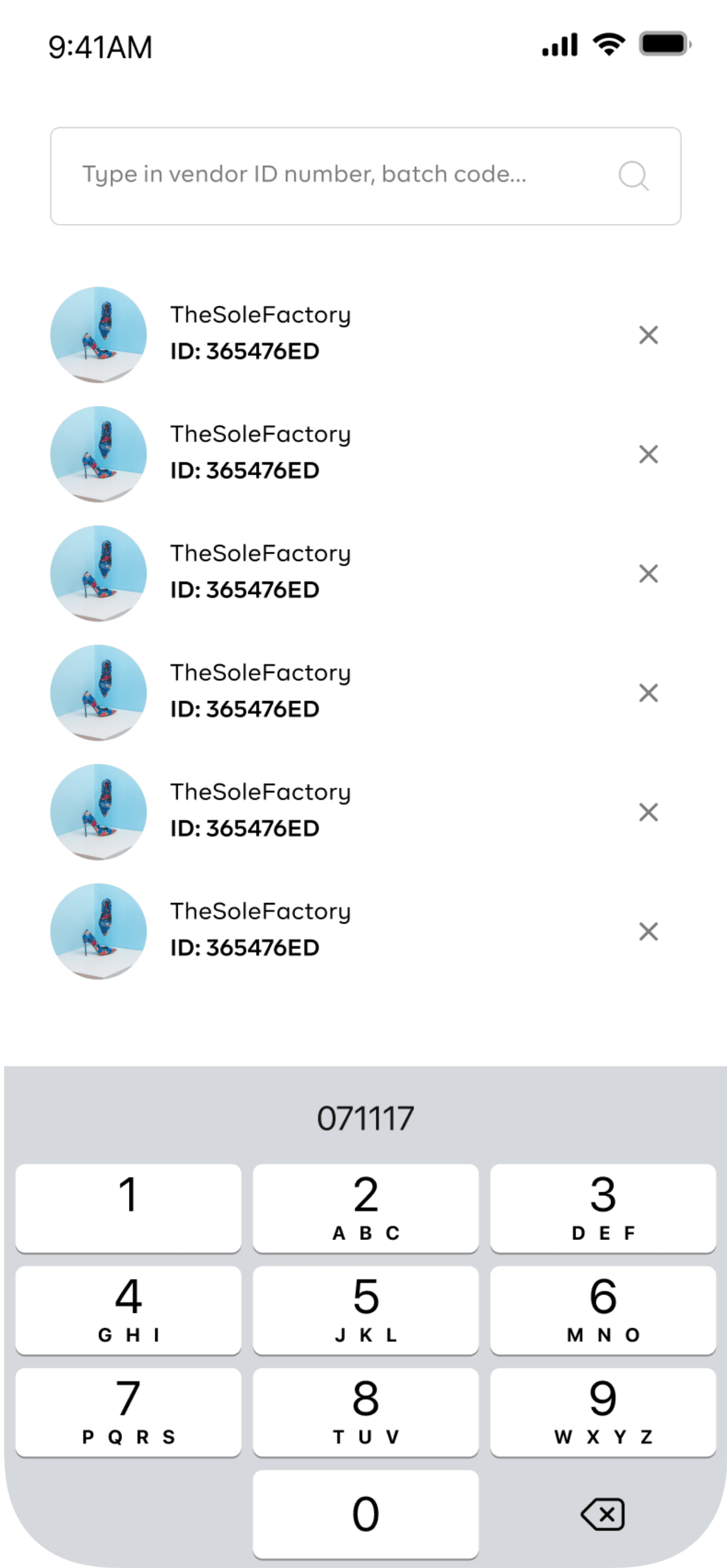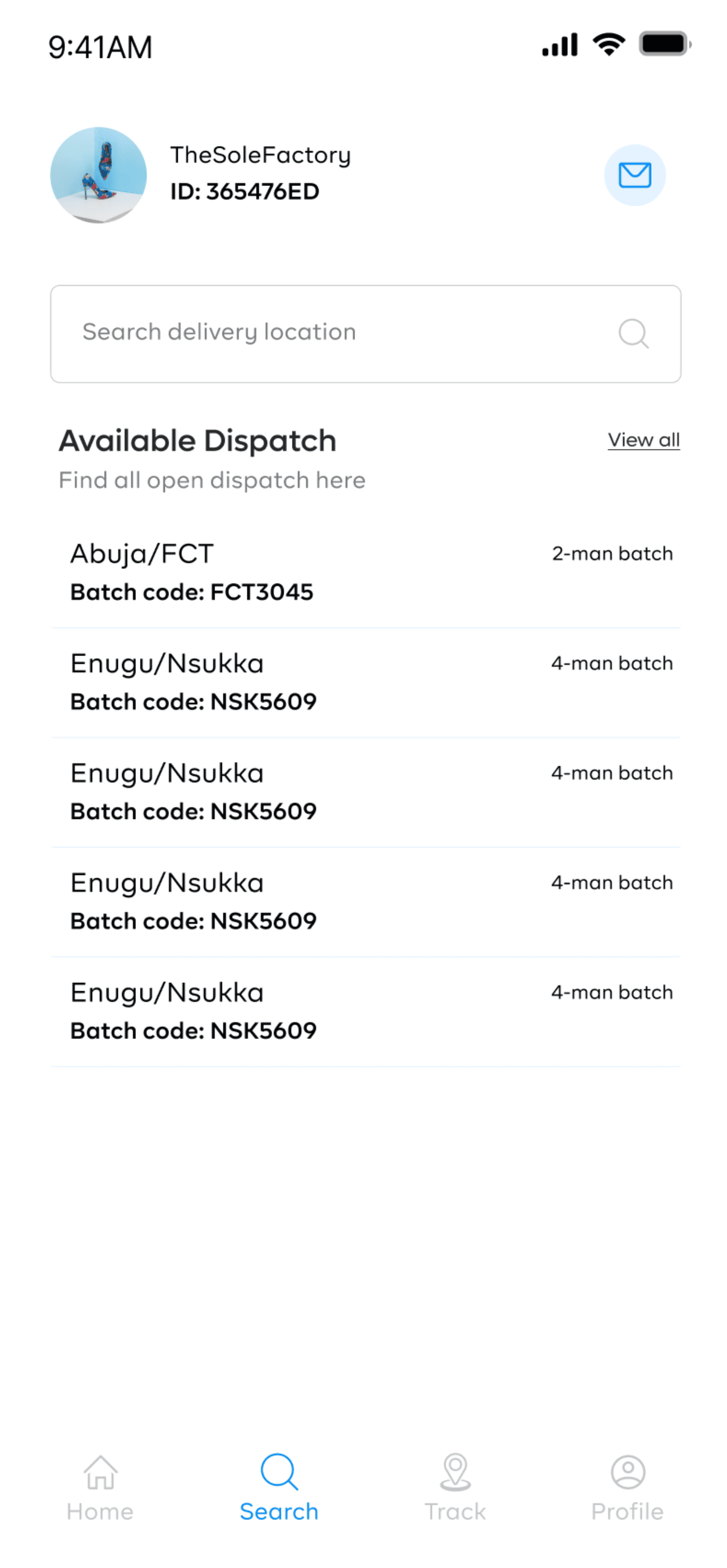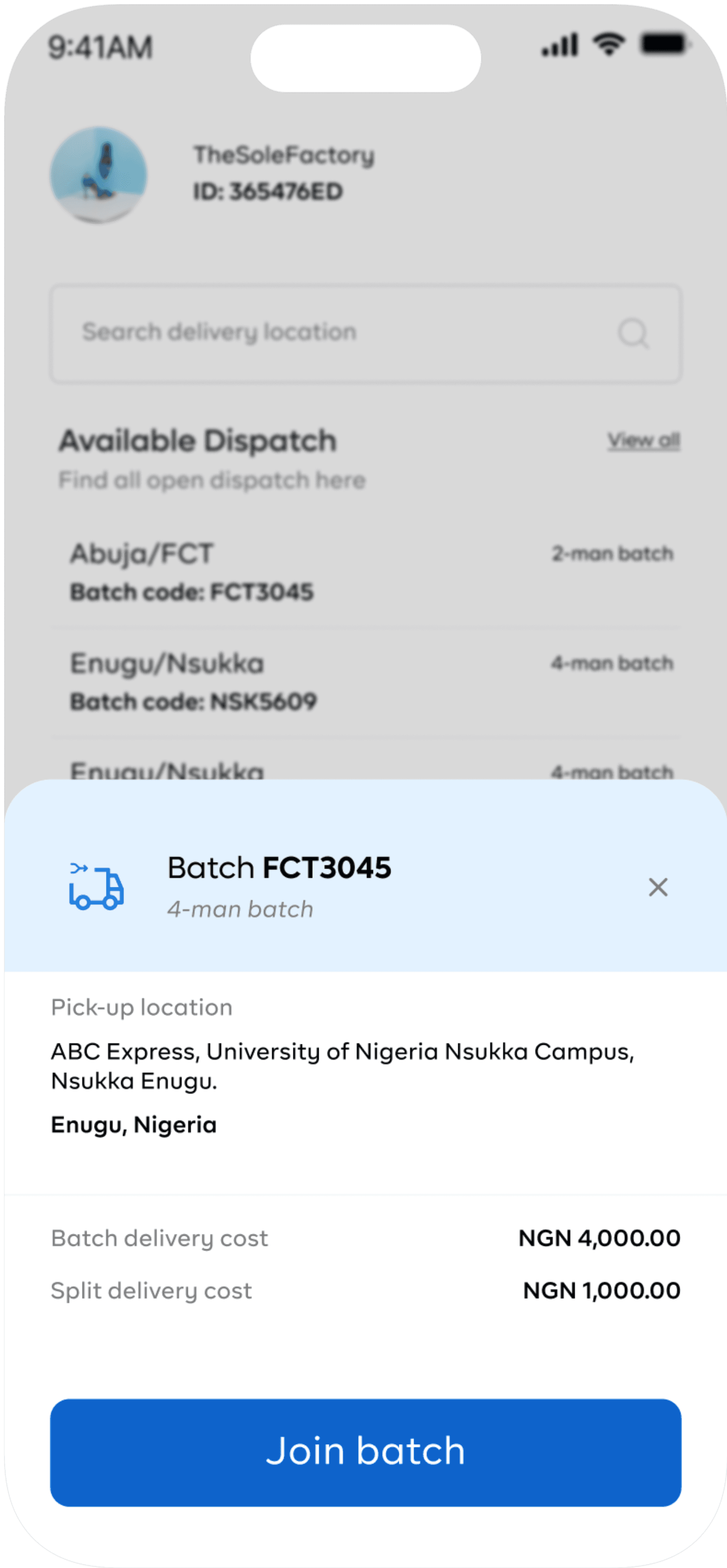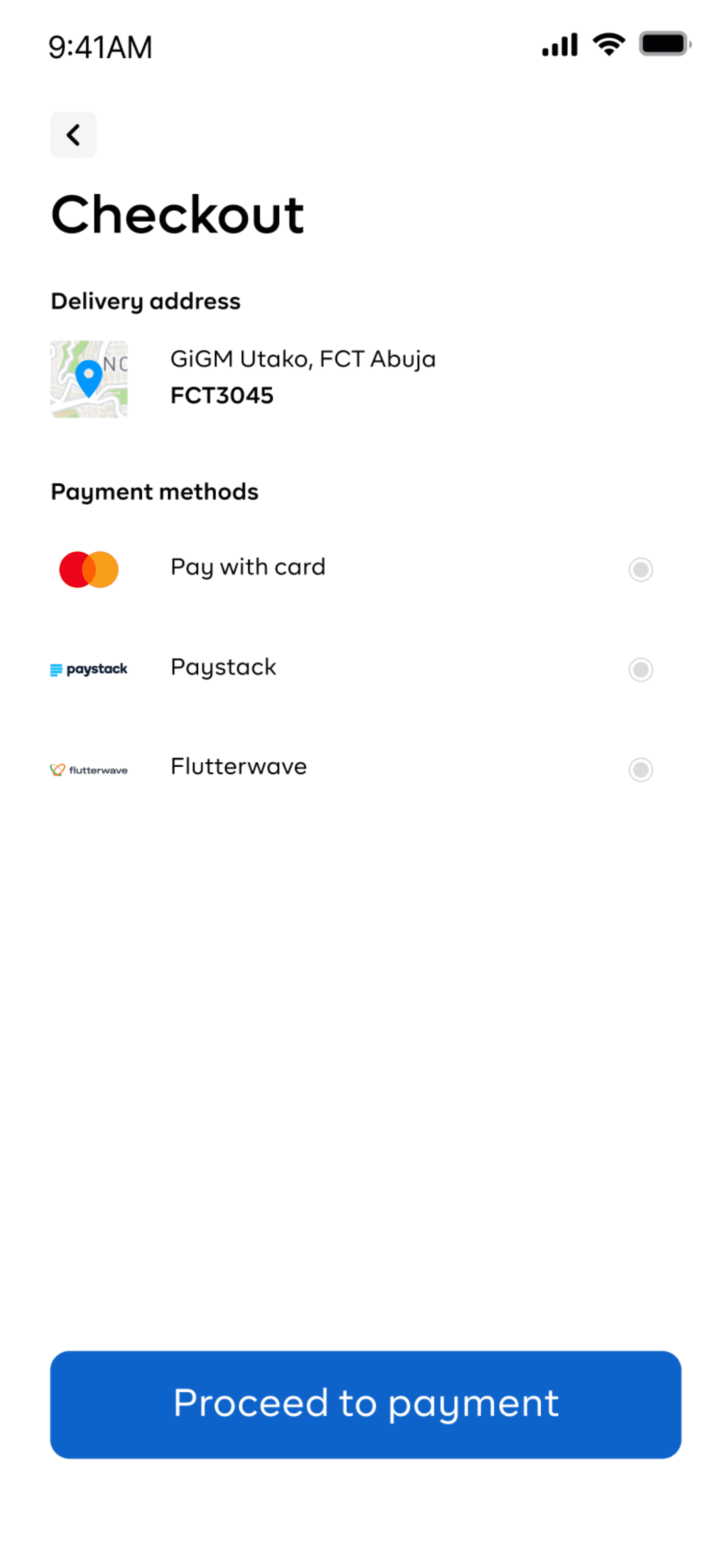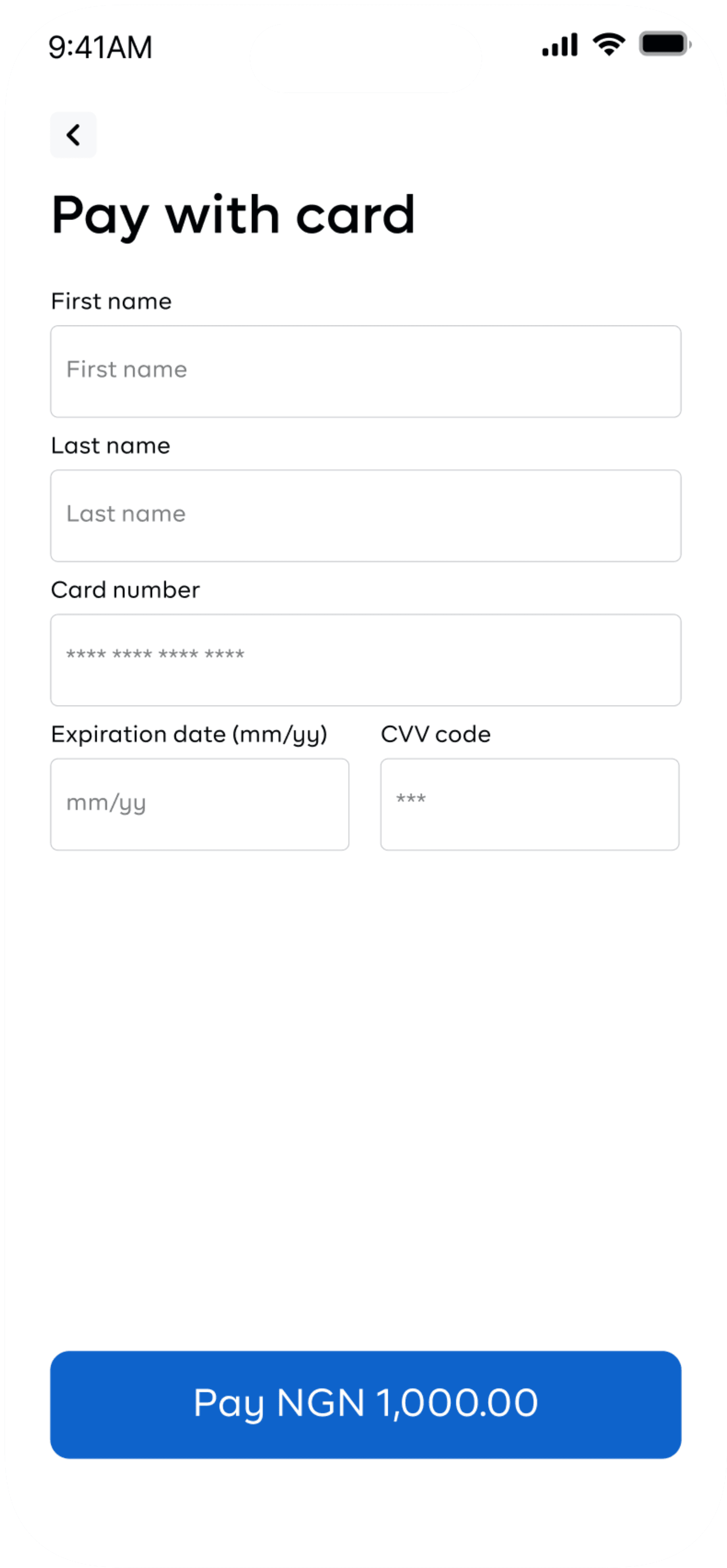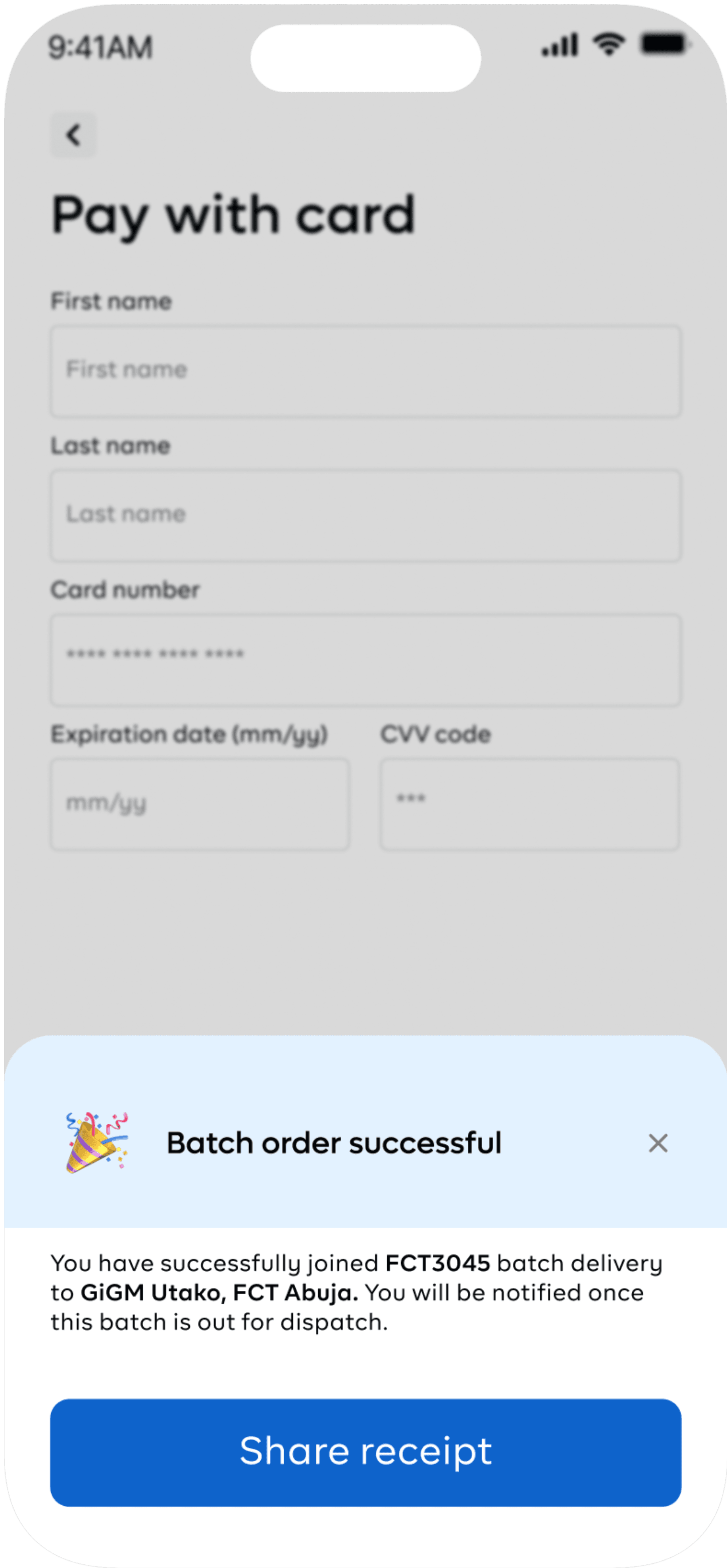PROJECT
Logistics
Joint App - Split delivery bills and save money on shipping cost
Joint App - Split delivery bills and save money on shipping cost
Joint App - Split delivery bills and save money on shipping cost

CLIENT
Personal
PROJECT CATEGORY
Delivery/Logistics
LIVE VIEW
Visit Website
DURATION
3 Months
Background
Background
Background
The COVID-19 pandemic era had a very significant effect on the major economic activities in countries around the global but for the sake of this project, we would be using Nigeria as a case study.
One of the major Impact was the significant change in how Nigerians shop for the things they need. Hitherto, Nigerians relied heavily on the good ‘ol method of going to the market to purchase their daily needs and supplies and also carry out business transactions.
As a result of the pandemic lockdown, consumers were locked up in their homes and businesses were unable to sell their goods as usual. This lead to the massive adaptation of E-commerce in Nigeria as research shows 81% increase in online shopping activities around the country.
The rise of E-commerce activities in the country came with its own challenges such as making payments for goods and services, the logistics involved in transporting the goods from vendors to consumers e.t.c
The COVID-19 pandemic era had a very significant effect on the major economic activities in countries around the global but for the sake of this project, we would be using Nigeria as a case study.
One of the major Impact was the significant change in how Nigerians shop for the things they need. Hitherto, Nigerians relied heavily on the good ‘ol method of going to the market to purchase their daily needs and supplies and also carry out business transactions.
As a result of the pandemic lockdown, consumers were locked up in their homes and businesses were unable to sell their goods as usual. This lead to the massive adaptation of E-commerce in Nigeria as research shows 81% increase in online shopping activities around the country.
The rise of E-commerce activities in the country came with its own challenges such as making payments for goods and services, the logistics involved in transporting the goods from vendors to consumers e.t.c
The COVID-19 pandemic era had a very significant effect on the major economic activities in countries around the global but for the sake of this project, we would be using Nigeria as a case study.
One of the major Impact was the significant change in how Nigerians shop for the things they need. Hitherto, Nigerians relied heavily on the good ‘ol method of going to the market to purchase their daily needs and supplies and also carry out business transactions.
As a result of the pandemic lockdown, consumers were locked up in their homes and businesses were unable to sell their goods as usual. This lead to the massive adaptation of E-commerce in Nigeria as research shows 81% increase in online shopping activities around the country.
The rise of E-commerce activities in the country came with its own challenges such as making payments for goods and services, the logistics involved in transporting the goods from vendors to consumers e.t.c

Problem
Problem
Problem
Due to the rise of E-commerce activities around the country, customers are now able to purchase goods online regardless of the vendor’s location. This brings us a new challenge of managing the delivery cost involved in transporting the customer’s purchased goods from the vendor’s location to their location.
Due to the rise of E-commerce activities around the country, customers are now able to purchase goods online regardless of the vendor’s location. This brings us a new challenge of managing the delivery cost involved in transporting the customer’s purchased goods from the vendor’s location to their location.
Due to the rise of E-commerce activities around the country, customers are now able to purchase goods online regardless of the vendor’s location. This brings us a new challenge of managing the delivery cost involved in transporting the customer’s purchased goods from the vendor’s location to their location.
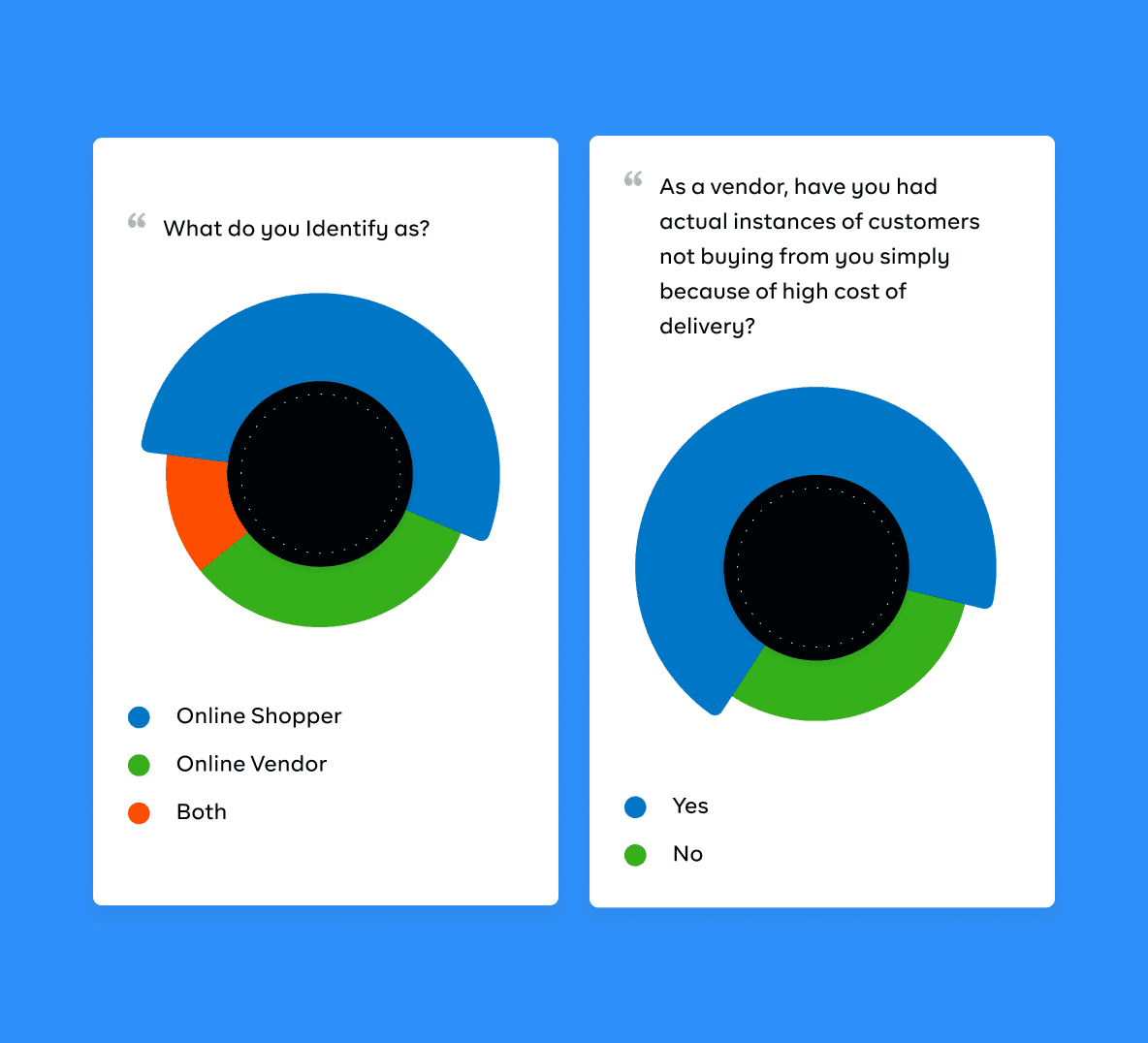


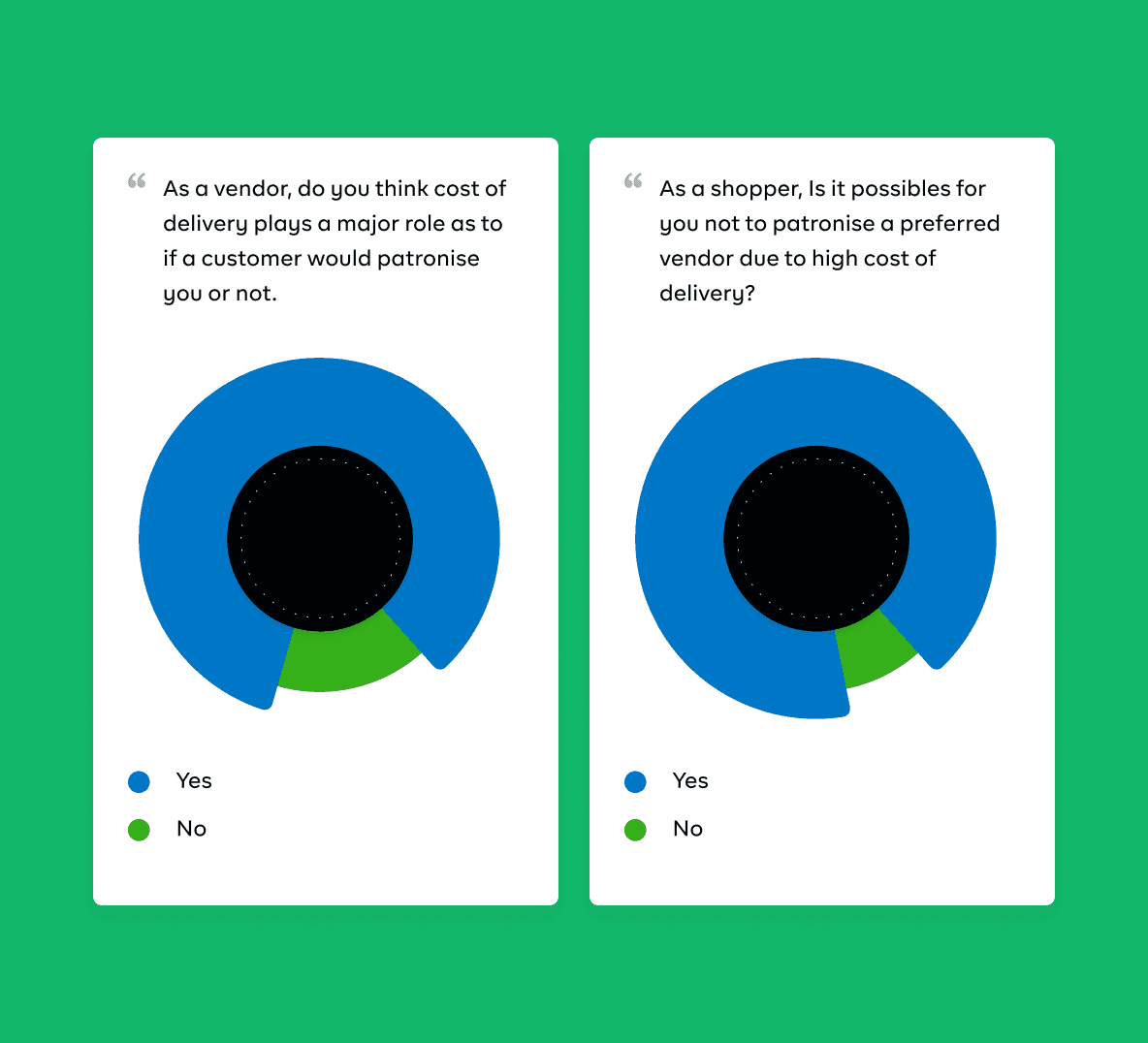


Solution
Solution
Solution
Joint vendors across all e-commerce platforms can open delivery batches for their customers located in same location allowing customers to split the delivery bills between themselves.
Joint vendors across all e-commerce platforms can open delivery batches for their customers located in same location allowing customers to split the delivery bills between themselves.
Joint vendors across all e-commerce platforms can open delivery batches for their customers located in same location allowing customers to split the delivery bills between themselves.
Challenge
Challenge
Challenge
One of the major challenges of the Joint app is that it still latches on 3rd party logistics businesses for the delivery of the goods. This might not be sustainable as the proposed solution of Joint reduces the profit of these third party logistics companies.
One of the major challenges of the Joint app is that it still latches on 3rd party logistics businesses for the delivery of the goods. This might not be sustainable as the proposed solution of Joint reduces the profit of these third party logistics companies.
One of the major challenges of the Joint app is that it still latches on 3rd party logistics businesses for the delivery of the goods. This might not be sustainable as the proposed solution of Joint reduces the profit of these third party logistics companies.
Create Batch Dispatch
Create Batch Dispatch
Create Batch Dispatch
Vendors using the Joint app are allowed to open batch deliveries for their customers in the same location to split the cost of shipping. Customers can join a batch either by using a batch code or joining open batches on a vendor’s page.
Vendors using the Joint app are allowed to open batch deliveries for their customers in the same location to split the cost of shipping. Customers can join a batch either by using a batch code or joining open batches on a vendor’s page.
Vendors using the Joint app are allowed to open batch deliveries for their customers in the same location to split the cost of shipping. Customers can join a batch either by using a batch code or joining open batches on a vendor’s page.
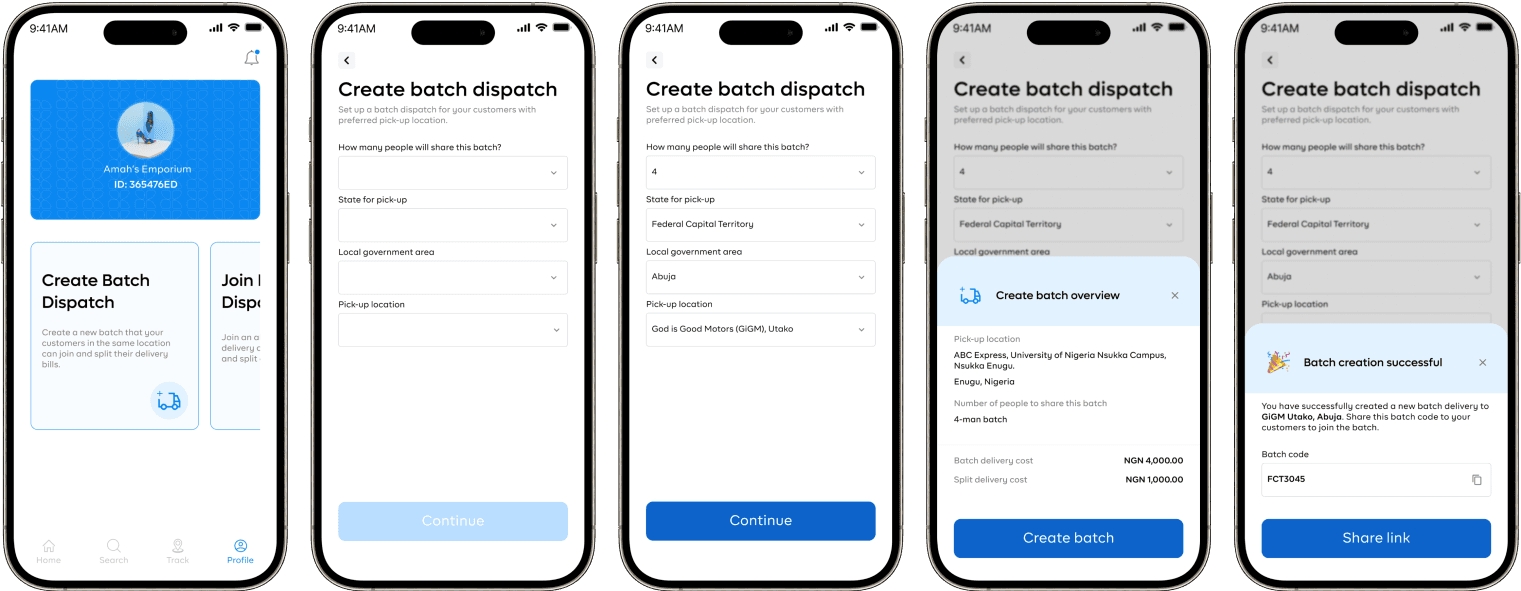


Join Batch Dispatch
Join Batch Dispatch
Join Batch Dispatch
After shopping from any online platform, Joint allows you find your vendor using their unique ID number; select from a list of available delivery batches depending on your location, split delivery bills and make payment.
After shopping from any online platform, Joint allows you find your vendor using their unique ID number; select from a list of available delivery batches depending on your location, split delivery bills and make payment.
After shopping from any online platform, Joint allows you find your vendor using their unique ID number; select from a list of available delivery batches depending on your location, split delivery bills and make payment.
Track Parcel & Message Vendors
Track Parcel & Message Vendors
Track Parcel & Message Vendors
Customers can track their batch delivery order to know the status; if the batch is complete and has been sent out for delivery, there is also a messaging feature so customers can message vendors to confirm the status of their parcel delivery.
Customers can track their batch delivery order to know the status; if the batch is complete and has been sent out for delivery, there is also a messaging feature so customers can message vendors to confirm the status of their parcel delivery.
Customers can track their batch delivery order to know the status; if the batch is complete and has been sent out for delivery, there is also a messaging feature so customers can message vendors to confirm the status of their parcel delivery.
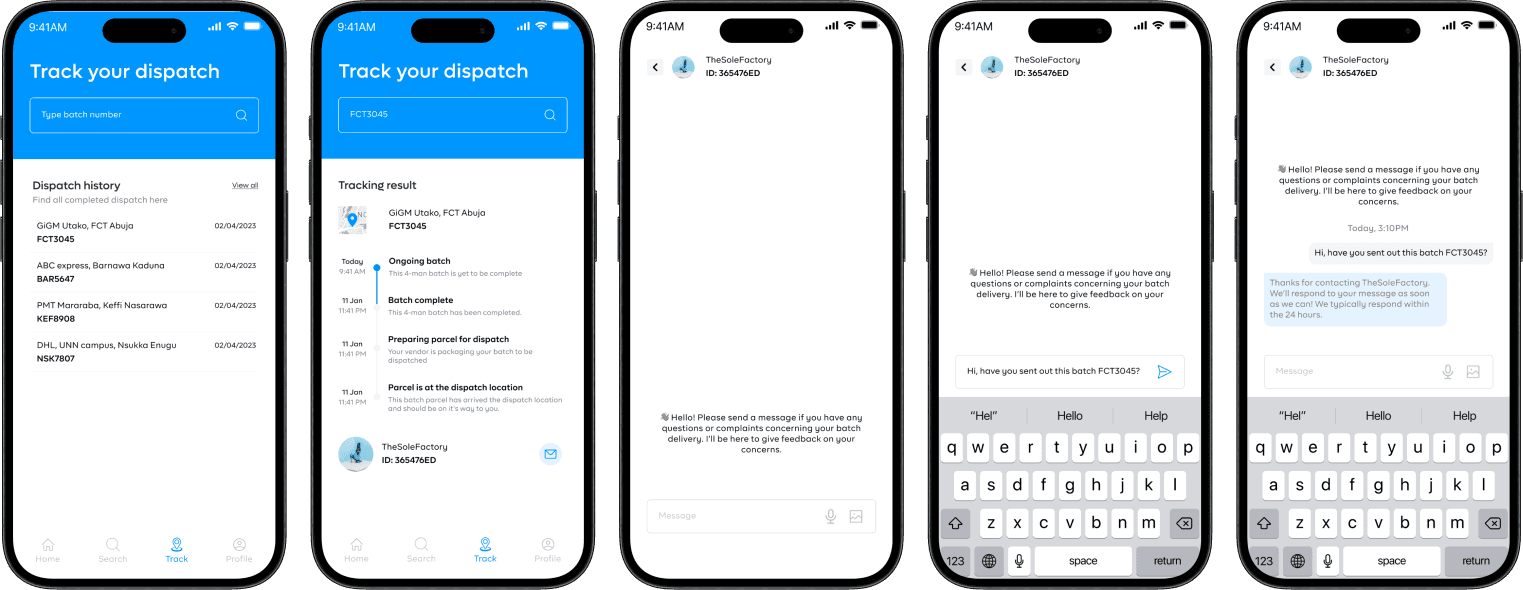


Customer & Business Profile
Customer & Business Profile
Customer & Business Profile
Some customers shopping from one vendor can have their own businesses; so there is provision for customers to upgrade their account to business accounts in other to open batch deliveries for their own stores while also being able to join delivery batches opened by other vendors.
Some customers shopping from one vendor can have their own businesses; so there is provision for customers to upgrade their account to business accounts in other to open batch deliveries for their own stores while also being able to join delivery batches opened by other vendors.
Some customers shopping from one vendor can have their own businesses; so there is provision for customers to upgrade their account to business accounts in other to open batch deliveries for their own stores while also being able to join delivery batches opened by other vendors.



Test, Iterate
Test, Iterate
Test, Iterate
During the testing with two users from the target audience i.e a business vendor and student, I focused on the flow process for creating a batch delivery (vendor) and joining a batch dispatch (customer). In the process of testing and talking through the designed solution, I learned the following;
Vendors preferred to have a pre-scheduled date for dispatching joint deliveries in other for them to be able to manage their business and push things in defined schedules.
Vendors also complained about some of customers having large orders and how it could be managed.
Customers also preferred to know an estimated time of arrival of their goods.
To that effect, I made some necessary adjustments to the design solution allowing vendors to pick a pre-scheduled date for dispatch and also incorporating a maximum order weight per batch slot.
During the testing with two users from the target audience i.e a business vendor and student, I focused on the flow process for creating a batch delivery (vendor) and joining a batch dispatch (customer). In the process of testing and talking through the designed solution, I learned the following;
Vendors preferred to have a pre-scheduled date for dispatching joint deliveries in other for them to be able to manage their business and push things in defined schedules.
Vendors also complained about some of customers having large orders and how it could be managed.
Customers also preferred to know an estimated time of arrival of their goods.
To that effect, I made some necessary adjustments to the design solution allowing vendors to pick a pre-scheduled date for dispatch and also incorporating a maximum order weight per batch slot.
During the testing with two users from the target audience i.e a business vendor and student, I focused on the flow process for creating a batch delivery (vendor) and joining a batch dispatch (customer). In the process of testing and talking through the designed solution, I learned the following;
Vendors preferred to have a pre-scheduled date for dispatching joint deliveries in other for them to be able to manage their business and push things in defined schedules.
Vendors also complained about some of customers having large orders and how it could be managed.
Customers also preferred to know an estimated time of arrival of their goods.
To that effect, I made some necessary adjustments to the design solution allowing vendors to pick a pre-scheduled date for dispatch and also incorporating a maximum order weight per batch slot.








